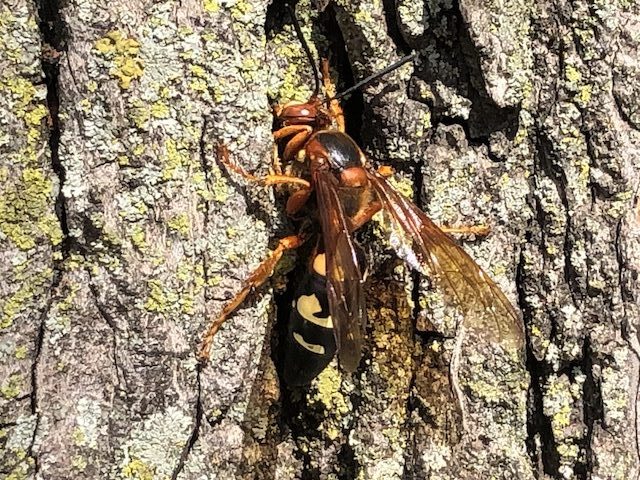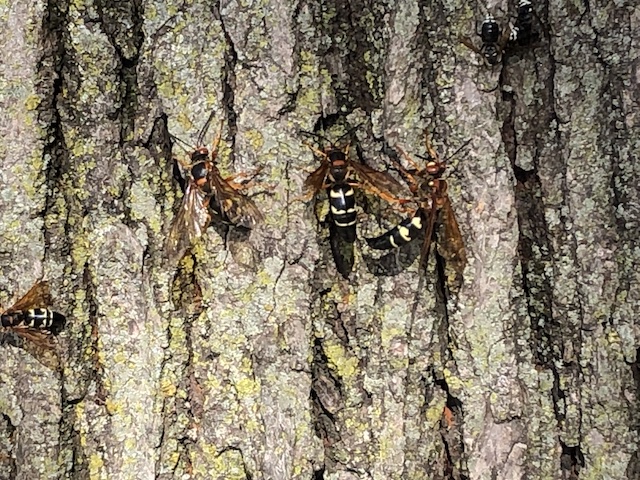
On my usual summer walk to Lake Michigan, I pass a tree on Montrose Avenue that is simply inundated with these bizarre looking and rather intimidating insects. There are many trees along this street, but only this one was being “attacked.”
At first I thought, “These are cicadas.” The translucent wings are large and long and very cicada-like. But the body – with those wild yellow stripes – and head are completely different. And these creatures are way too active. As we all know, cicadas are extremely lazy. They rarely fly (unless tethered to a thread) and find joy only in mating (in life) and making our pets throw up (in death).
I get close for a photo, maybe a foot away, when one of the beasts leaps onto my chest. I was so startled, my water bottle shoots 10 feet into the air. I think I also may have screamed (a little baby-like, whimpering scream), but don’t quote me on that.
When I recover from the trauma and get home, I immediately Google “cicada wings wasp body” and there it is: Eastern cicada killer wasp (aka giant ground hornet).
Up to two inches long, these assassins pose no threat to humanity (thank goodness!). Their sole purpose every July and August is to attack as many cicadas – not the 17-year variety, but the annuals – then drag their paralyzed bodies into underground burrows, where they deposit a single egg under the tiny arm of each helpless victim. Larvae soon emerge and feast on the cicadas – ALIVE! Then they emerge as adults the following summer. Rinse and repeat.
This article, “The Cicada Killers are Coming,” in The Atlantic really paints a picture. My key takeaways:
- The female cicada killer can dig a burrow several feet long with multiple brood chambers in just a few hours.
- The male cicada killer spends most of its short life fighting for a mate and vomiting on its head to keep cool.
And all that crazy activity that I saw? I am going to assume those were the males fighting each other, which they do because there are no physical boundaries to their territories.
What I don’t understand is why there was only one tree on Montrose Avenue with all this action. Is it a certain type of tree? Are there burrows beneath it? And have they been there for centuries?
I guess I will have to wait until next July to find out.




